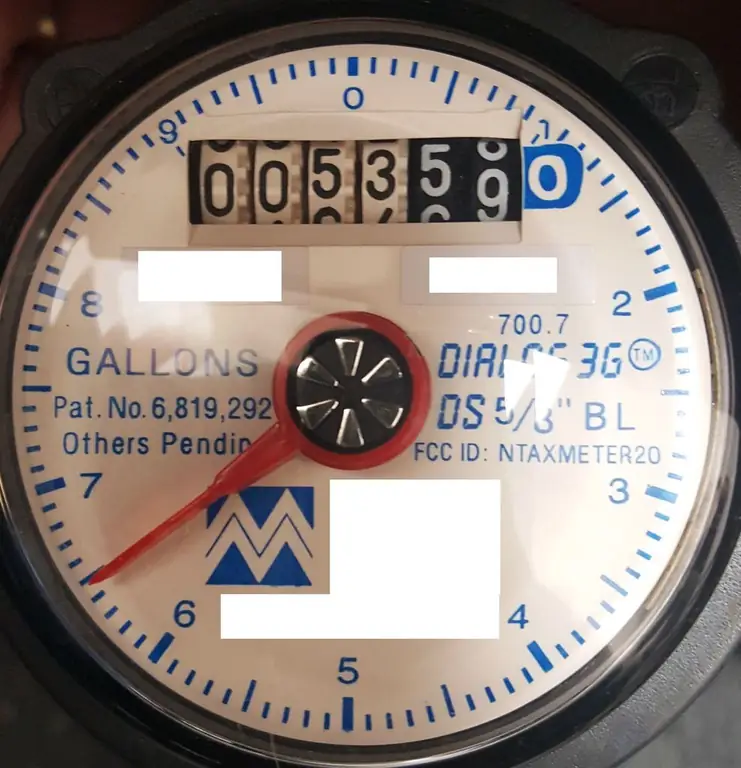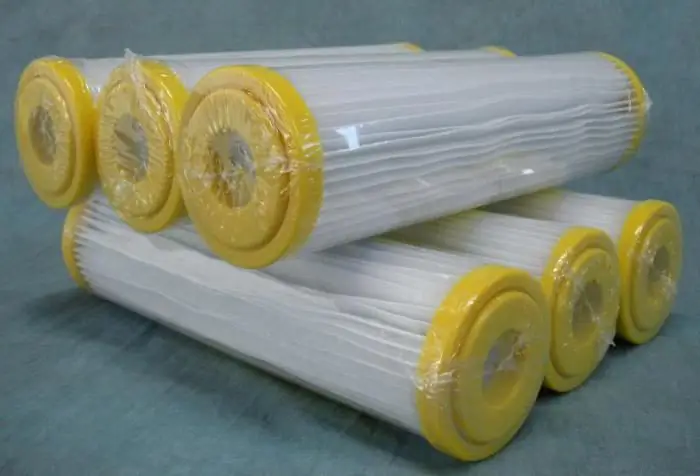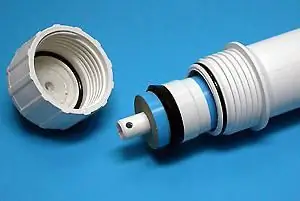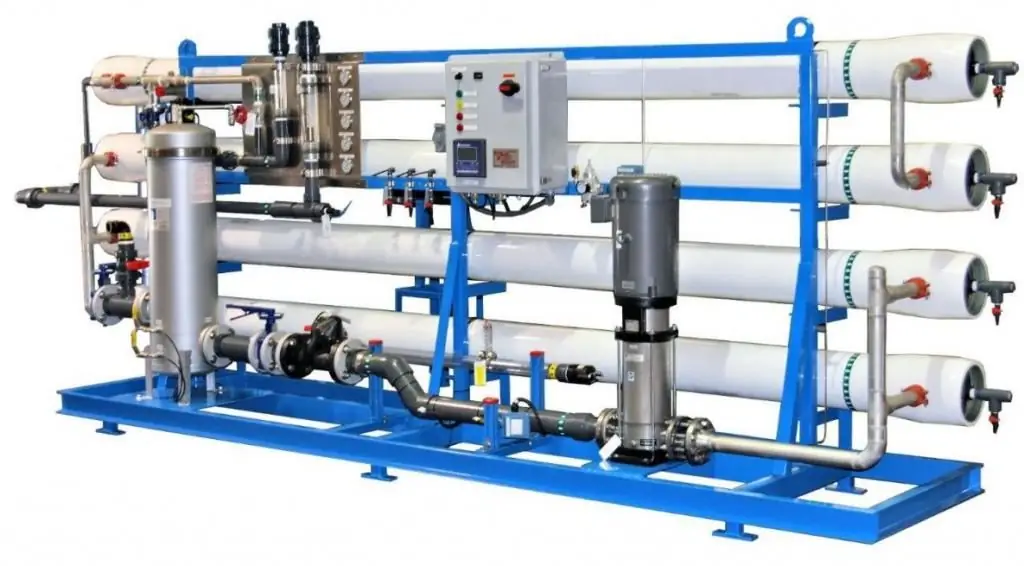2025 Author: Howard Calhoun | [email protected]. Last modified: 2025-01-24 13:10:35

Many are interested in such a strange name for the phenomenon: "reverse osmosis". It comes from the Greek word for pressure or push. It refers to the spontaneous process of transfer of a substance, usually water, through a membrane - a semi-permeable partition that separates two solutions that have a different concentration. This could be brine and pure water, for example.
Technology
When a membrane, passing only water to a more concentrated substance, blocks the path of dissolved elements, then at some point equilibrium occurs. Pressure equalized on both sides of the septum is called osmotic pressure. This phenomenon has been used since the seventies of the last century to purify water, especially when drinking from seawater.
Today, reverse osmosis is perhaps the most advanced technology. It is based on the use of the membrane of the same name. It is believed that it is able to purify water from any existing natural impurities.

History of occurrence
Reverse osmosis, likeThe process of separating the components of a solution from each other has a rather long history. Even the ancient Greeks, in particular, Aristotle, noticed that when sea water passes through the walls of a vessel made of wax, it is desalinated.
The study of membrane processes in more detail began only at the beginning of the eighteenth century, when semi-permeable natural membranes were used for scientific purposes by Réaumur. However, until the twenties of the last century, these processes did not go beyond laboratory research.

In 1927, the German company "Sartorius" for the first time received samples of artificial semi-permeable partitions. The development of technology has become the impetus for the fact that reverse osmosis is used in filters in industrial and domestic conditions.
After the war, the Americans, based on the developments of the Germans, launched the production of cellulose membranes. And only at the end of the sixties, when the production of synthetic materials began to spread, the first scientific developments began to be carried out, which became the basis for the industrial application of osmosis.
At present, similar systems are already being installed everywhere, allowing you to have drinking water with a maximum degree of purification. Its composition, obtained at the outlet of the "reverse osmosis" system, is considered environmentally friendly. According to its characteristics, it is close to the melt water of ancient glaciers.

Application
Water filters - reverse osmosis - are connected to the water supply from which the intendedwater for cleaning, while the selected impurities go to the sewer. The work process includes pretreatment and passage through the membrane. After that, the flow, first entering the accumulator, where purified water is collected, goes to the final purification, and from there to the tap.
The reverse osmosis filter is today's most economical, versatile and reliable method. It allows you to reduce the concentration of dissolved and colloidal dissolved components by almost one hundred percent, ridding the liquid of viruses and microorganisms.
The most significant thing in this whole process is the pretreatment. In this system, the membrane (reverse osmosis) is the most expensive replacement element. The term of its work depends, firstly, on the quality of the incoming water. At this stage, three filters are used in series, the task of which is to prepare the liquid for passage through the membrane.
Recommended:
Shelf life of water meters: period of service and operation, verification periods, operating rules and time of use of hot and cold water meters

The shelf life of water meters varies. It depends on its quality, the condition of the pipes, the connection to cold or hot water, the manufacturer. On average, manufacturers claim about 8-10 years of operation of devices. In this case, the owner is obliged to carry out their verification within the time limits established by law. We will tell you more about this and some other points in the article
Reverse osmosis water treatment plant

The article is devoted to reverse osmosis water treatment plants. The features of such models, reviews, cost, etc. are considered
Osmosis is What is reverse osmosis?

The article is devoted to osmosis - the filtration process, which results in water purification. The principles of operation and varieties of membrane filters operating on the principle of reverse osmosis are considered
Industrial reverse osmosis plant: rules, installation instructions, filters and principle of operation

Industrial reverse osmosis plants: purpose, features of purification technology. Basic equipment and additional options. The main characteristics of the installations. Membrane types. Operating principle. Installation and commissioning
Type of bank guarantee. Securing a bank guarantee

One of the ways to secure financial obligations, when a credit institution, at the request of the principal, must make payment to the beneficiary, are bank guarantees. These conditions are written in the contract. A bank guarantee can be considered a payment document only if it is drawn up in strict accordance with applicable law

